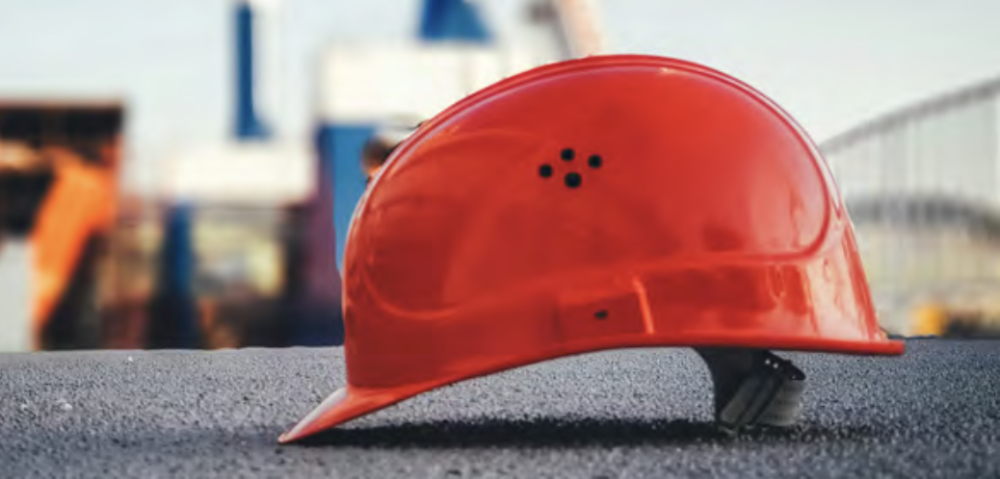Picking up the hard hat on site or not...
Contents |
[edit] Common factors preventing workers using head protection and how to solve them
Wearing a hard hat is mandatory in many applications and industries, protecting the safety of individuals in potentially hazardous environments. But wearing PPE can be seen by users as a hindrance rather than an important safety feature for their workday.
This is typically the learned experience of industrial professionals who have at times found that some hard hats can bring on headaches, make them hot and sweaty, or often do not fit properly. At MSA Safety, we believe that the most effective hard hat is the one a worker will want to wear.
A more comfortable helmet can not only empower workers, but can also make them feel safer and happier, improve their productivity and even boost their confidence, allowing them to better focus on the job at hand.
To understand what makes a great hard hat, we need to dissect some key issues associated with common protective headwear solutions on the market today and find out what exactly is deterring users from wearing this vital piece of protective equipment correctly. We outline some of the most common factors which could hinder correct usage of hard hats on site, and how selecting the appropriate hard hat can help to reduce this.
[edit] Temperature regulation
From construction professionals operating outside in the scorching heat to mechanical specialists contracted to conduct works in boiler rooms, many industrial workers find themselves carrying out demanding jobs in incredibly warm environments. The combination of heat and physical exertion can make wearing personal protective equipment (PPE) extremely uncomfortable if the appropriate hard hat has not been selected for the workers.
Hard hats can be warm; they trap sweat and perspiration can make them fog. To help reduce this, helmets with ventilation should be opted for. These helmets can be adapted to improve comfort. Also, sweatbands made from a soft, sweat-absorbing and respiring material can be incorporated, washed and replaced.
Accessories can also be incorporated in aiding workers’ comfort during winter months or in colder environments, in which wearing hard hats can be just as uncomfortable. Winter liners can assist with temperature regulation, helping to protect workers from the cold and keep them warmer. In addition, for those working outdoors, helmets with integrated rain gutters may be more practical for workers, ensuring water drains off the bill rather than down the wearer’s neck.
From boiling to freezing, the type of environment your workers are operating in is an essential factor to consider when choosing the appropriate hard hat for your workers.
[edit] All day comfort
If protective hard hats do not have a good fit and appropriate straps to keep them in place, they can slip, slide and move around, becoming a distraction for workers.
Understandably, this is a top factor that contributes to workers not wearing their hard hat when needed. Indeed, if a helmet slips down, vision may be impaired, and if it needs to be adjusted at a critical moment then potentially dangerous tools may not be under a worker’s full control.
Thankfully, there are ways to solve this problem. A six-point ratchet textile suspension will contribute to comfort, enabling the helmets to be adjusted to fit a range of head sizes and genders, thus providing an inclusive and secure fit. This will minimise rattling and slippage, even when users are repeatedly looking around. Equally, a four-point textile chinstrap can reinforce the retention of the helmet on your head.
While comfort, at least in part, stems from temperature regulation and fit, the actual feel of the helmet against your head is also crucial. For this reason, soft textile straps and good suspension is invaluable. An effective hard hat should also prevent hair pulling and compression headaches, facilitate good airflow and feature a quality ratchet system for quick, smooth and reliable adjustments.
[edit] Appropriate for work applications
Ultimately, hard hats become an extension of your head during the workday. And, in cases of confined or restrained spaces, smaller equipment is often more practical. In these applications users can look to acquire models that have a modern dynamic design with a low-profile, compact, sports-styled shell and no protruding peaks.
Of course, the solution depends on the application. Short peak or peak-less safety helmets can be better for workers requiring good upwards visibility, yet standard peaks are better for protecting your eyes from the sun. Non-vented shells should always be used in environments where chemicals or hot liquids may be projected.
It is also important to consider the accessories that are appropriate for certain applications, movements and tasks. If it is hard to tweak the sizes and straps, any additional features will add little value and may go unused. It is important that users can easily adjust the size of their hard hat for a secure fit, even when wearing safety gloves.
[edit] Aesthetics
It is not always just a case of what a helmet feels like, but what it looks like too. People like to look their best, whether that be in their personal lives or at work. This attachment can help the worker take better care of their protective headwear, which extends the lifespan of each model and makes product investments go further.
When considering aesthetics, a safety helmet that has a modern, low-profile sporty design is likely to be more desirable than larger, chunkier alternatives. Despite this, you should always look to prioritise the level of protection; safety should never be compromised for style.
[edit] How to choose the right hard hat for you
There are a diverse range of factors to consider, from suspension, soft textile materials, vented or non- vented models, to heat regulation accessories, size and aesthetics.
Appropriately selecting the model and relevant accessories can provide many benefits. Not only can the right hard hat help to improve the safety of your staff, but it can also increase confidence, contribute to a happier workforce, and boost productivity by enabling workers to work more efficiently.
This article appears in the AT Journal issue no 150, summer 2024 as 'Picking up the hard hat: common factors preventing workers using head protection and how to solve them' and was written by MSA Safety, images supplied.
--CIAT
[edit] Related articles on Designing Buildings
- Achieve safety in demolition.
- Asbestos.
- CDM.
- CIAT articles.
- CIOB People, PPE that fits campaign.
- CIOB urges construction industry to share PPE with healthcare providers.
- Cold stress.
- Construction dust.
- COSHH.
- Deleterious materials.
- Demolition.
- Dynamic self-retracting lanyard.
- Face coverings.
- Filtering facepieces.
- First aider.
- Fit testing.
- Getting personal about protective equipment.
- Hazardous substances.
- Health and safety.
- Health and safety for building design and construction.
- Heat stress.
- Hi-vis clothing.
- How to keep workers safe around machinery.
- Method statement.
- New domestic electrical work video.
- Noise at Work Assessment.
- Occupational health.
- Pandemic safety for on-site accommodations.
- Personal Protective Equipment PPE.
- PPE regulations 2022.
- Risk assessment.
- Safety briefing.
- Safety helmet colours.
- Personal protective equipment PPE.
- The Personal Protective Equipment at Work Regulations 1992.
- Toolbox talk.
- Workplace noise exposure estimator.
- Workplace safety supplies.
Featured articles and news
The UK's Modern Industrial Strategy: A 10 year plan
Previous consultation criticism, current key elements and general support with some persisting reservations.
Building Safety Regulator reforms
New roles, new staff and a new fast track service pave the way for a single construction regulator.
Architectural Technologist CPDs and Communications
CIAT CPD… and how you can do it!
Cooling centres and cool spaces
Managing extreme heat in cities by directing the public to places for heat stress relief and water sources.
Winter gardens: A brief history and warm variations
Extending the season with glass in different forms and terms.
Restoring Great Yarmouth's Winter Gardens
Transforming one of the least sustainable constructions imaginable.
Construction Skills Mission Board launch sector drive
Newly formed government and industry collaboration set strategy for recruiting an additional 100,000 construction workers a year.
New Architects Code comes into effect in September 2025
ARB Architects Code of Conduct and Practice available with ongoing consultation regarding guidance.
Welsh Skills Body (Medr) launches ambitious plan
The new skills body brings together funding and regulation of tertiary education and research for the devolved nation.
Paul Gandy FCIOB announced as next CIOB President
Former Tilbury Douglas CEO takes helm.
UK Infrastructure: A 10 Year Strategy. In brief with reactions
With the National Infrastructure and Service Transformation Authority (NISTA).
Ebenezer Howard: inventor of the garden city. Book review.
The Grenfell Tower fire, eight years on
A time to pause and reflect as Dubai tower block fire reported just before anniversary.
Airtightness Topic Guide BSRIA TG 27/2025
Explaining the basics of airtightness, what it is, why it's important, when it's required and how it's carried out.
Construction contract awards hit lowest point of 2025
Plummeting for second consecutive month, intensifying concerns for housing and infrastructure goals.
Understanding Mental Health in the Built Environment 2025
Examining the state of mental health in construction, shedding light on levels of stress, anxiety and depression.

























